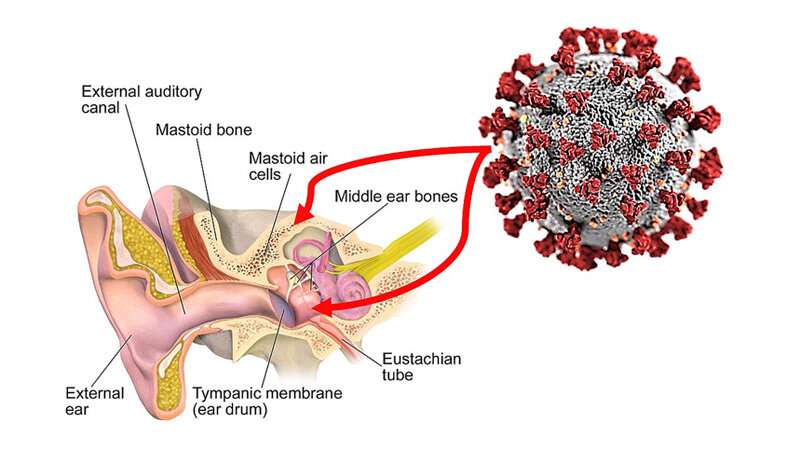Have you heard? Middle ear, mastoid harbor SARS-Cov-2 and may pose risk for medical staffs

A team of otolaryngologists and pathologists at Johns Hopkins Medicine has confirmed that SARS-CoV-2, the novel coronavirus behind the current COVID-19 pandemic, can colonize the middle ear and mastoid region of the head behind the ear. Based on this, the team recommends that physicians, surgeons, nurses and other health care professionals—especially otolaryngologists—should practice recommended protective procedures against SARS-CoV-2 when dealing with examination, sample collecting, treatment and surgery of these two connected areas.
The physicians reported their findings in a research letter posted online on July 23, 2020, in JAMA Otolaryngology.
"Previously, medical personnel in the otolaryngology world only had a theoretical risk on which to base a decision whether or not to follow guidelines against SARS-CoV-2," says C. Matthew Stewart, M.D., Ph.D., associate professor of otolaryngology–head and neck surgery at the Johns Hopkins University School of Medicine and co-author of the letter. "Now that we have proven the virus can survive in the middle ear and mastoid, professionals in our community know the threat is real and can guard against it with appropriate procedures and protective equipment."
The mastoid bone, located in the temporal region of the skull, contains a number of hollowed spaces known as mastoid air cells. These are believed to cushion the area against trauma, protect the delicate structures of the middle and inner ear, and regulate ear pressure. In humans, the middle ear contains the three tiny bones called the ossicles—more commonly known individually as the anvil, hammer and stirrup—that direct sound waves from the outside into the inner ear for processing.
In their study, the Johns Hopkins researchers autopsied three patients who had tested positively for SARS-CoV-2 and were symptomatic for COVID-19 prior to death. Stewart says that using powered instruments during the autopsies would have posed a dangerous risk for creating infectious droplets and aerosols, so the team relied on hand tools and techniques from the early 1900s to take bone and mucosal specimens from the left and right mastoids, as well as swabs of the left and right middle ears. These samples were analyzed to see if the novel coronavirus could be isolated from them.
One patient was negative for virus in both mastoids and both middle ears. SARS-CoV-2 was isolated from the targeted regions of the other two people—the first in the right middle ear only and the second in all four sampled sites. The researchers believe that, despite the variation in virus recovery seen in the three patients (possibly related, they say, to different time intervals between death and autopsy), the conclusive finding of virus in the middle ear and mastoid warrants more caution and protective measures by health care professionals working in these two areas, especially during ear surgery.
More information: Kaitlyn M. Frazier et al. SARS-CoV-2 Virus Isolated From the Mastoid and Middle Ear, JAMA Otolaryngology–Head & Neck Surgery (2020). DOI: 10.1001/jamaoto.2020.1922




















